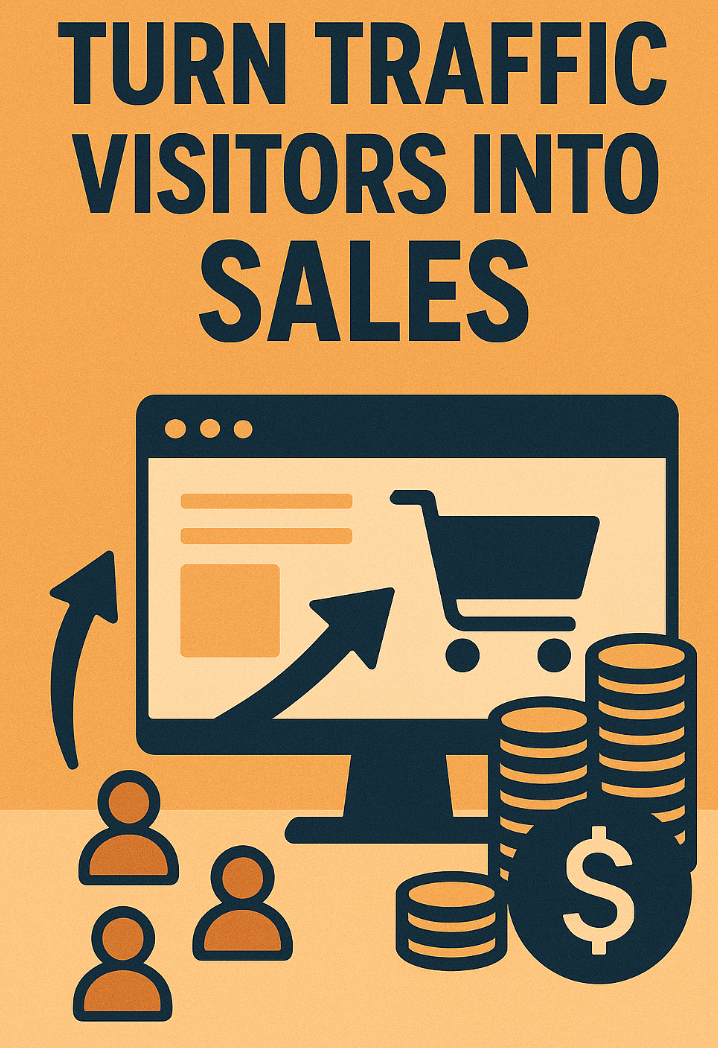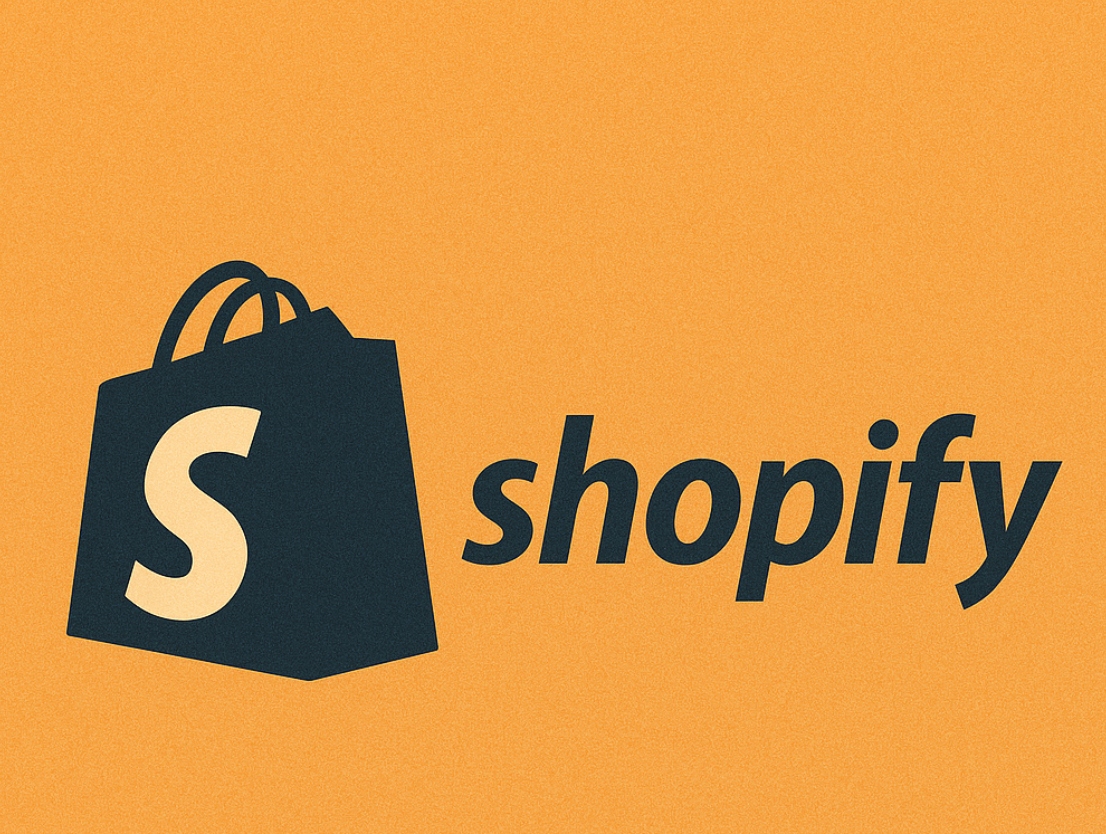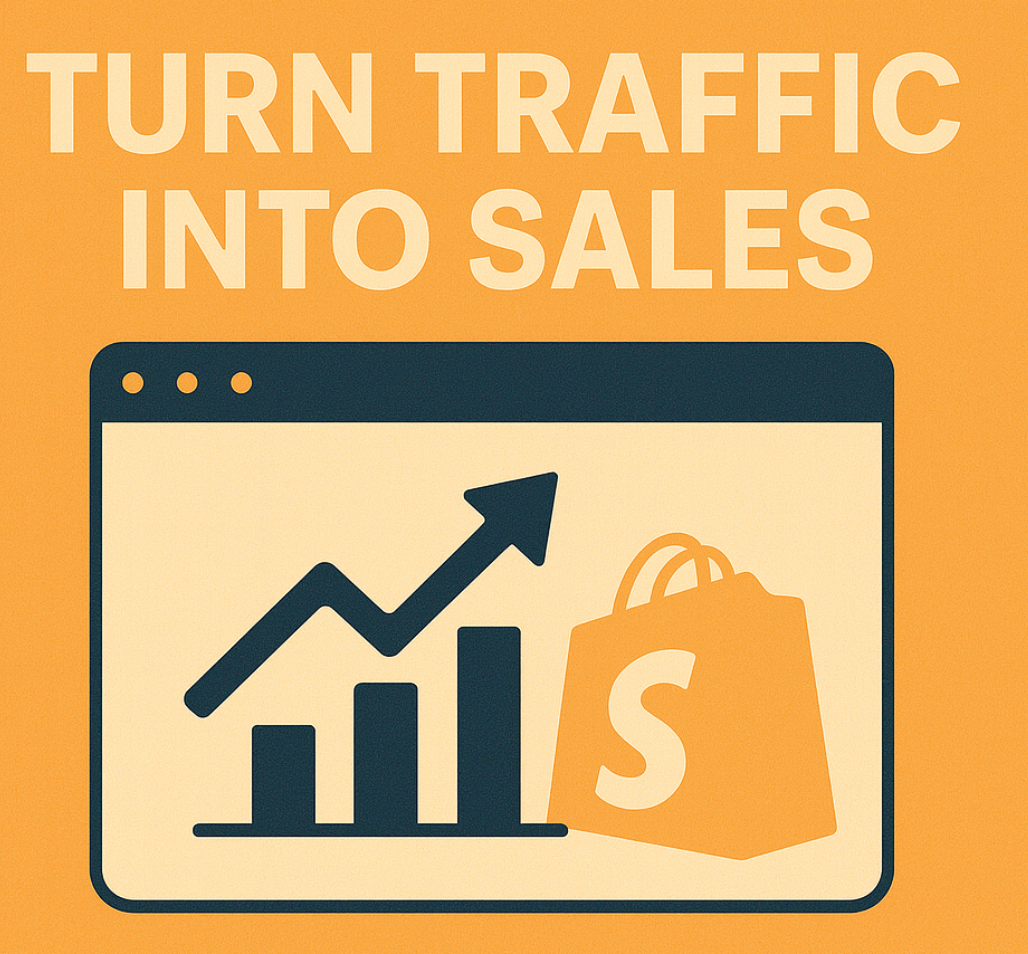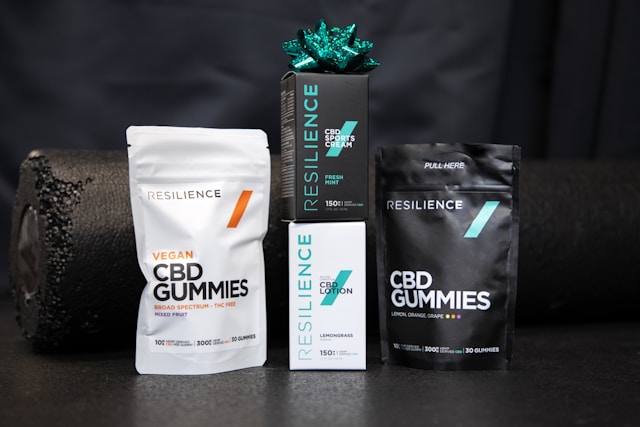Conversion Rate Optimization for Small Business: 5 Ways to Fix Your Sales Funnel and Increase ROI
Why Your Paid Traffic Isn't Converting (And How to Fix It)
Here's what I've learned after analyzing hundreds of business websites: nearly every SMB and service business gets traffic. But converting that traffic? That's where most fail.
If you're running Google Ads, Facebook campaigns, or SEO initiatives and watching your budget disappear with minimal return, you're not alone. The instinct is always the same: spend more to get more. But here's the uncomfortable truth—if your website, landing pages, or customer journey aren't converting now, every additional dollar you invest in traffic is flowing straight through a broken funnel.
This isn't about needing a complete website redesign or a larger ad budget. It's about conversion rate optimization (CRO) and user experience strategy—a systematic approach to making every visitor count before you scale.
What Growth Optimization Actually Means
Growth optimization extends beyond traditional conversion rate optimization. It's a holistic discipline that examines everything influencing your ability to convert and retain customers: your competitive positioning, unique value proposition, messaging architecture, landing page design for cold traffic, website navigation, checkout flows, onboarding sequences, and the psychological triggers that drive decision-making.
When implemented correctly, growth optimization transforms businesses—from dental practices spending** $15K monthly on Google Ads with a 2% conversion rate**, to HVAC companies losing leads at the quote request stage, to accounting firms where 80% of traffic bounces before reading past the hero section.
Let me show you exactly where businesses like yours are bleeding revenue, and the tactical fixes that stop it.
Real-World Conversion Scenarios: Where SMBs Lose Money
1. E-commerce and DTC Brands: High Ad Spend, Low Return
The Scenario:

What I Found:
- Product pages loaded in 6.2 seconds on mobile (58% of their traffic)
- No trust signals above the fold—no reviews, guarantees, or security badges
- Product descriptions buried below images, requiring excessive scrolling
- A five-step checkout with unexpected shipping costs revealed at the final stage
- Zero post-purchase engagement or upsell strategy
The CRO Solution: We conducted a full-funnel audit from ad click through post-purchase. The fixes weren't complicated, but they were strategic:
- Compressed images and implemented lazy loading, reducing mobile load time to 2.1 seconds
- Added trust badges (secure checkout, money-back guarantee, customer reviews) immediately visible without scrolling
- Restructured product pages: benefits first, then specifications, with clear urgency indicators ("23 sold today" or "Low stock")
- Simplified checkout to three steps with transparent shipping costs displayed upfront
- Created a post-purchase sequence: thank you page with related products, followed by a three-email nurture series
The Result: Conversion rate increased from 1.1% to 2.6% within 45 days. Same traffic, same ad spend—but revenue nearly tripled. The math is straightforward: fixing the funnel multiplied return on every advertising dollar already being spent.
This applies beyond e-commerce. Home decor retailers, supplement brands, specialty food companies, and custom product manufacturers all face identical challenges. The question isn't whether CRO works—it's whether you'll optimize before or after wasting another quarter's budget.
2. SaaS and Software Platforms: Strong Signup Numbers, Weak Activation
The Scenario: You've nailed acquisition. Your landing page converts. You're generating 300-500 free trial signups monthly. But here's the problem: 60% of users never return after day one, and your trial-to-paid conversion rate sits at 8%.
I see this constantly with project management tools, CRM platforms, scheduling software, and niche B2B SaaS products. Traffic isn't your issue—activation is.
What's Actually Happening:
- Users sign up but encounter an empty dashboard with no guidance
- The "aha moment" (the point where value becomes obvious) takes too long to reach
- Onboarding requires too many steps before delivering any tangible benefit
- Users receive either zero follow-up emails or a barrage of generic messages that feel like spam
- The product's value proposition doesn't clearly map to the user's immediate workflow
The CRO Solution: Activation optimization requires behavioral data and user psychology working in tandem:
- Map the shortest path to the first win. What does success look like in the first five minutes? For a scheduling tool, it's creating and sharing one meeting link. For a CRM, it's adding one contact and logging one interaction. Make that the entire focus of onboarding.
- Implement empty state guidance. This is the number one activation killer I encounter. When users see a blank dashboard, they leave. Instead, use empty states as micro-education moments: "Add your first client in 30 seconds" with a one-click prompt.
- Use progressive disclosure. Don't ask for everything upfront. Get users to value first, then progressively request additional setup information.
- Leverage behavioral analytics (Mixpanel, Amplitude, PostHog) to identify exactly where users drop off. Heatmaps from Hotjar or Microsoft Clarity reveal what users actually click versus what you think they'll click.
- Deploy emotional microcopy. Instead of "Complete Setup," try "You're one step away from your first win!" Small psychological nudges significantly impact completion rates.
The Impact: I worked with a workflow automation SaaS where we increased day-one activation from 35% to 61% by implementing these principles. Trial-to-paid conversion jumped from 8% to 14%. Monthly recurring revenue (MRR) increased by 73%—without increasing traffic or ad spend by a single dollar.
Here's what most SaaS founders miss: a 20% improvement in activation typically increases MRR more than doubling your traffic. Fix the experience before scaling acquisition.
3. Service Businesses and Lead Generation: Traffic Without Inquiries
The Scenario: This is perhaps the most common challenge among service-based SMBs. Law firms, HVAC companies, roofing contractors, insurance agencies, accounting practices, dental offices, physical therapy clinics, and consulting firms invest heavily in Google Ads or local SEO, driving thousands of visitors monthly—but form submissions remain stubbornly low.
I recently analyzed 43 websites across home services (roofing, HVAC, plumbing), professional services (legal, accounting, consulting), and healthcare services (dental, physical therapy, veterinary). The pattern was consistent: 97% had critical conversion barriers in their lead capture process.
What's Consistently Wrong:
- CTAs feel high-commitment and high-pressure. "Schedule a Consultation" or "Book Your Appointment" demands immediate commitment before trust is established. Would you hand over your phone number and schedule to a business you discovered 30 seconds ago?
- Zero trust signals near forms. No testimonials, no credentials, no social proof, no guarantees. Just a form asking for personal information with no reason to feel confident providing it.
- Feature-focused copy instead of outcome-focused messaging. Service businesses default to explaining what they do instead of addressing the specific pain points prospects are experiencing. A roofing company talks about "30 years of experience and quality materials" instead of "Stop worrying about leaks before the next storm."
- Broken mobile experiences. When 60-70% of service business traffic comes from mobile (especially for emergency services like plumbing or locksmith work), forms that are difficult to complete on a phone screen kill conversions.
The CRO Solution: Lead generation optimization is about reducing friction and building trust simultaneously:
- Replace high-commitment CTAs with low-friction alternatives. Instead of "Schedule Consultation," try "Check My Eligibility" or "Get Free Estimate" or "See If We Can Help." These phrases communicate low barrier and no commitment.
- Saturate your conversion areas with trust signals. Place client testimonials immediately adjacent to forms. Add credential logos, certifications, and association memberships. Include guarantees, especially for service industries where trust is paramount ("No-obligation estimate" or "Fixed-price guarantee"). -** Rewrite all copy t**hrough the lens of outcomes and pain points first. Your prospect isn't shopping for "comprehensive financial planning services"—they're looking for "retirement confidence" or "tax bill reduction." Lead with the pain, follow with your solution.
- Audit and optimize the mobile form experience. Most service business forms are desktop-designed and mobile-broken. Use form field detection, minimize required fields, add supportive microcopy near each field explaining why you're asking, and position your CTA button within easy thumb reach.
The Impact: A personal injury law firm I worked with was spending $12,000 monthly on Google Ads with a 1.8% conversion rate on their "Free Case Review" landing page. After implementing these changes—rewriting CTAs to "Check If You Have a Case," adding six video testimonials near the form, restructuring copy to lead with pain points (medical bills, lost wages, insurance runarounds), and simplifying the mobile form from nine fields to four—conversion rate increased to 4.9%.
Same ad spend. Same traffic volume. But lead volume increased 172%, and cost per lead dropped from $186 to $68. More importantly, because the form was less burdensome, lead quality improved—fewer tire-kickers, more serious prospects.
This pattern repeats across service industries. Whether you're an HVAC contractor, insurance agent, or B2B consultant, reducing form friction and building trust are the fastest paths to conversion improvement.
4. Subscription and Membership Businesses: The Retention Crisis
The Scenario: You're acquiring customers successfully. Month one looks promising. But by month three, retention falls off a cliff. Customer lifetime value (LTV) never reaches projections because repeat engagement evaporates after the initial purchase.
I see this across subscription boxes, membership sites, supplement companies, meal kit services, SaaS with monthly billing, and any business model relying on recurring revenue.
What's Driving Churn:
- Non-existent or generic post-purchase communication. Customers receive a confirmation email, then silence until the next billing notification. No ongoing value reinforcement, no education, no community building.
- Missing replenishment and re-engagement triggers. No strategic outreach based on usage patterns or consumption cycles. A supplement company should know when customers are running low. A meal kit service should predict when users might be getting bored with recipes.
- Weak loyalty architecture. No referral incentives, no tiered benefits, no rewards for continued engagement. Customers have no reason to stay beyond the functional product itself.
- Account dashboards optimized for information display rather than action. Users log in to manage their account and encounter static information rather than prompts to engage, upgrade, or reorder.
The CRO Solution: Retention optimization requires anticipating customer needs and proactively addressing them:
- Build automated replenishment flows based on consumption cycles. If your average customer uses a 30-day supply of product, trigger a reorder reminder at day 23. Make reordering frictionless—one-click, same preferences, immediate processing.
- Implement behavior-triggered email sequences. If a user hasn't logged in for 14 days, send a re-engagement email highlighting underutilized features or new offerings. If someone browses a category without purchasing, follow up with social proof from that category.
- Deploy session-based personalization. Use tools like Hotjar or Microsoft Clarity to understand how retained customers behave differently than churned customers, then optimize the experience to guide new customers toward retention behaviors.
- Add social proof specifically focused on retention. Create "Why Customers Stay" sections on product pages and within account areas. Feature testimonials about long-term value, not just initial satisfaction.
- Redesign account dashboards as engagement hubs rather than information displays. Prominently feature recommended products, easy reorder buttons, loyalty point balances, and referral incentives.
The Impact: A supplement subscription company I consulted with had 42% month-two retention. We implemented consumption-based email flows, redesigned their account portal to emphasize reordering and product discovery, and created a referral program with tangible rewards. Month-two retention increased to 61% within one quarter.
Even a 10% improvement in retention rate can double profit margins over a twelve-month period for subscription businesses. The math is simple: acquiring customers is expensive; retaining them is profitable.
5. Marketing Teams and Agencies: Unstable ROAS Before Scaling
The Scenario: You're managing paid advertising for yourself or clients. Return on ad spend (ROAS) fluctuates unpredictably. Some campaigns perform well, others tank without clear explanation. You're hesitant to increase budget because performance isn't stable enough to justify it.
This affects in-house marketing teams at SMBs, agencies managing multiple clients, and fractional CMOs trying to scale growth predictably.
What's Creating Instability:
- Messaging misalignment between ad copy and landing page experience. The promise in the ad doesn't match what users encounter after clicking. Keywords suggest one intent; the landing page addresses another.
- Analytics dashboards showing traffic metrics without capturing user intent or behavior. You know how many people visited, but not why they left or what they were trying to accomplish.
- Decision-making based on assumptions rather than behavioral validation. Teams guess which elements matter without user recordings, heatmaps, or qualitative feedback confirming hypotheses.
- Lack of conversion diagnostics before budget increases. The instinct is to scale what's "working," but without understanding why it's working or where micro-conversions are failing.
The CRO Solution: Stabilizing performance requires diagnostic rigor before budget scaling:
- Conduct pre-scale conversion audits. Before increasing ad spend, audit the entire user journey from ad impression through conversion. Identify friction points, trust gaps, and messaging misalignments. Fix these first.
- Ensure message-match between ad creative, keywords, and landing page content. If your ad highlights "free shipping," that benefit should be immediately visible on the landing page. If you're targeting "emergency plumber near me," don't land users on your homepage—send them to an emergency plumbing page with click-to-call prominence.
- Implement event-level tracking beyond basic pageview analytics. Track micro-conversions: CTA clicks, form starts, video plays, scroll depth, time on page. Understand where users engage and where they disengage.
- Layer qualitative insights on top of quantitative data. Use session recordings (Hotjar, Microsoft Clarity) to watch real users navigate your site. Deploy on-page surveys asking "What's preventing you from taking action today?" Mine customer reviews for language patterns that reveal objections.
- Test iteratively with clear hypotheses. Don't randomly A/B test. Develop hypotheses based on user behavior data, test them systematically, and document learnings for future optimization.
The Impact:

Reducing friction before scaling ad spend typically improves ROAS consistency by 30-50%. Stable performance allows confident scaling—which is where real growth happens.
The Framework: How to Start Optimizing Today
If you've recognized your business in any of these scenarios, here's how to begin systematic conversion optimization:
Step 1: Run a Conversion Diagnostics Audit
Before changing anything, understand your current state:
- Where do users enter your site? (Ad campaigns, organic search, referrals, direct)
- What's their likely intent based on source and landing page?
- Where do they go next? (Navigation patterns, scroll behavior, click activity)
- Where do they exit without converting? (Bounce pages, drop-off points, abandoned actions)
Use Google Analytics for traffic flow, Hotjar or Microsoft Clarity for behavioral insights, and tools like Mixpanel or Amplitude for event tracking in software products.
Step 2: Identify Your Highest-Impact Friction Points
Not all conversion barriers are equal. Prioritize based on:
- Volume: Which pages or steps get the most traffic?
- Impact: Which points have the highest drop-off rates?
- Effort: Which fixes can be implemented quickly versus requiring development resources?
Focus on high-volume, high-impact, low-effort changes first. These deliver the fastest ROI.
Step 3: Address Trust and Clarity Before Design
Most conversion problems aren't design problems—they're trust problems or clarity problems:
- Does your visitor immediately understand what you offer and for whom?
- Is there sufficient proof that you're credible, legitimate, and effective?
- Are the next steps obvious, and do they feel low-risk?
Add testimonials, credentials, guarantees, and clear CTAs before considering visual redesigns.
Step 4: Optimize for Mobile First
For most SMBs and service businesses, 55-70% of traffic is mobile. Yet most websites are desktop-designed with mobile as an afterthought. Audit your mobile experience ruthlessly:
- Load speed (aim for under 3 seconds)
- Form usability (minimize fields, use autocomplete, ensure buttons are thumb-accessible)
- Readability (font sizes, line spacing, contrast)
- CTA visibility (never bury your primary call-to-action below the fold on mobile)
Step 5: Test, Measure, Iterate
Conversion optimization isn't a one-time project—it's a continuous discipline:
- Implement changes systematically, measuring before-and-after performance
- Use A/B testing for high-traffic scenarios (when you have sufficient volume)
- Deploy changes and monitor for lower-traffic scenarios (when A/B testing would take too long for statistical significance)
- Document what works and what doesn't to inform future optimization
The Uncomfortable Truth About Growth
Here's what most SMBs and service businesses don't want to hear: your traffic probably isn't the problem.
I've reviewed hundreds of analytics accounts where businesses complain about insufficient traffic while sitting on thousands of monthly visitors with 1-2% conversion rates. The real issue isn't volume—it's optimization.
Consider the math:
- 5,000 monthly visitors × 1.5% conversion rate = 75 conversions
- 5,000 monthly visitors × 3.5% conversion rate = 175 conversions
That's a 133% increase in conversions from the same traffic you already have. No additional ad spend. No SEO campaign. No social media strategy. Just better conversion optimization.
Now consider the inverse:
- If you double your traffic (10,000 visitors) but maintain 1.5% conversion = 150 conversions
- That requires doubling your ad spend, SEO effort, or content output
- You've invested significantly more for the same result you could have achieved by optimizing conversion
This is why growth optimization comes before growth scaling.
Who Should Prioritize CRO Right Now
Conversion rate optimization isn't just for enterprise brands with massive budgets and large testing teams. It's most critical for:
- Service businesses (legal, accounting, HVAC, roofing, insurance, healthcare) where lead quality matters more than volume and customer LTV is high
- E-commerce and DTC brands spending on paid advertising without proportional return
- SaaS and software companies with healthy signup numbers but poor activation and retention
- Local businesses competing on Google Ads where cost-per-click continues rising
- Agencies and marketing teams managing client budgets and needing stable, predictable ROAS
- Any business where acquiring traffic is expensive and conversion rates are below industry benchmarks
If you're spending money on marketing but questioning whether it's working, conversion optimization should be your first priority—not your last resort.
What Happens When You Optimize First, Scale Second
The businesses that scale successfully follow a pattern: optimize the funnel until performance is predictable and profitable, then increase traffic to a proven system.
When you optimize first:
- Every marketing dollar generates higher return
- Customer acquisition cost (CAC) decreases while lifetime value (LTV) increases
- You gain confidence in your messaging, positioning, and offer
- Scaling becomes a budget decision, not a gamble
When you scale first:
- You pour budget into a broken system
- Poor conversion rates make every channel look unprofitable
- You cycle through agencies, platforms, and tactics searching for the "silver bullet"
- Growth remains elusive despite increasing investment
Your Next Step: Stop the Leak Before Increasing Flow

Ask these diagnostic questions:
- Where do users hesitate? Use session recordings to watch real visitors navigate your site. Where do they pause, backtrack, or show confusion?
- What stops them from completing their goal? Deploy exit-intent surveys. Ask directly: "What prevented you from [converting] today?"
- What part of your message or flow breaks trust? Review your pages as a skeptical stranger would. What would make you hesitate to provide your information or make a purchase?
- How can you fix it in three simple steps today? Not everything requires development resources. Many conversion improvements are copy changes, trust signal additions, or form simplifications.
The fastest path to growth isn't more traffic—it's making every visitor count.
Ready to Find Your Conversion Leaks?

This isn't about massive website redesigns or enterprise-level A/B testing. It's about systematic, data-driven improvements that multiply the return on traffic you already have.
Because you don't need more visitors. You need more conversions from the visitors you're already paying for.
Traffic is bought, conversion is earned.
Related posts:
Your Website Experience Is the Front Door to Your Product Experience
Before anyone touches your SaaS product, they experience your website — the first environment where your value is tested.
How Wellness Brands Can Convert Cold Traffic with Hormozi’s Principles
The Real Reason Your Wellness Website Isn’t Converting
AI CRO Reports Explained: How Beauty and Luxury Brands Can Optimize Faster
AI CRO Reports turn messy user data into clear action items for beauty brands.

